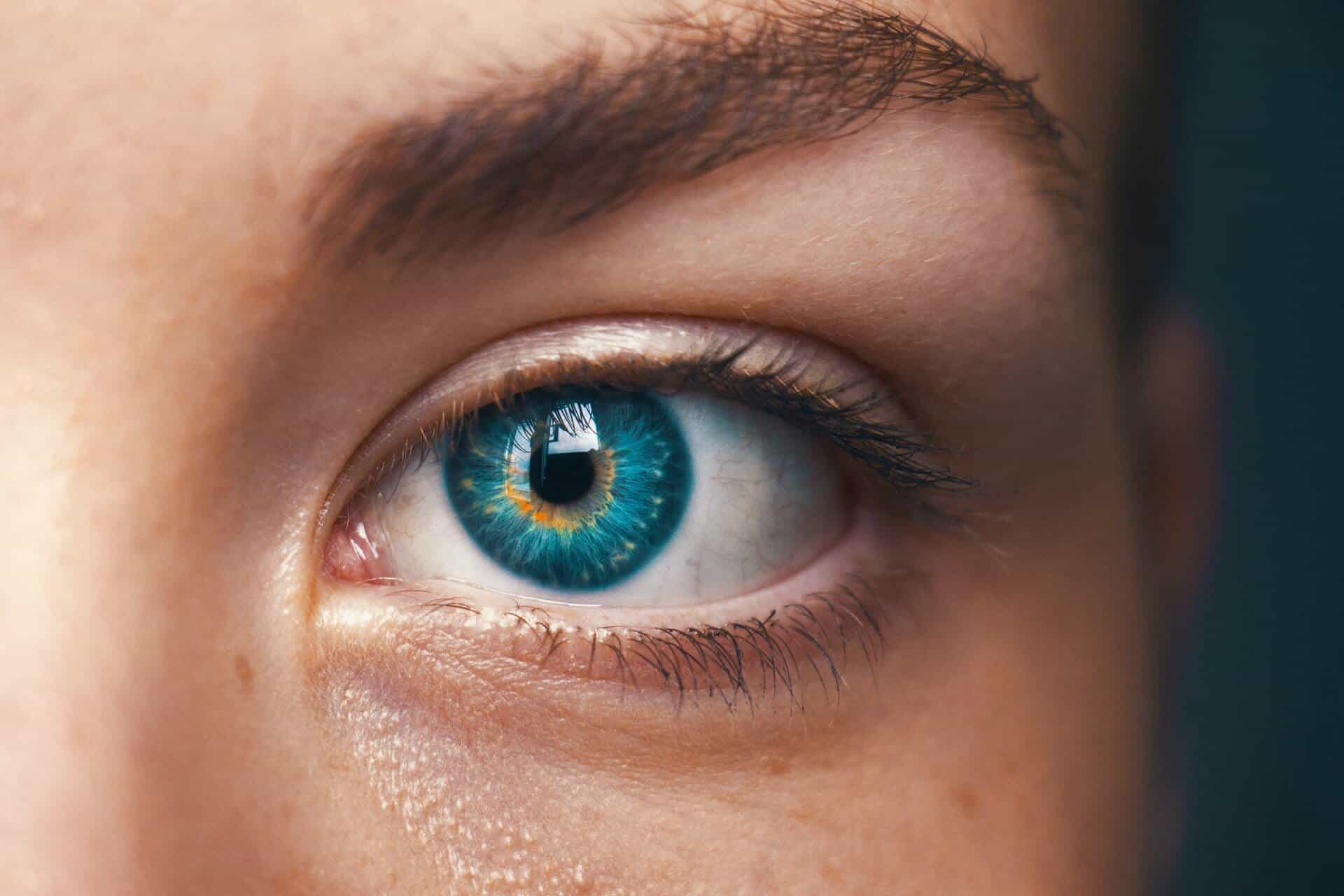This is part 2 of the glaucoma series. If you have not yet read part one, “What is Glaucoma”, it is highly encouraged to read it before moving on to this article as the basic mechanisms of the disease will not be rediscussed here.
This article will focus on the 4 major types of glaucoma—primary open angle, secondary, juvenile, and congenital glaucoma in addition to different treatment options. This is not an all-inclusive article, but will dive in to the most common types and treatment options for glaucoma.
The 4 Main Types of Glaucoma:
Primary Open Angle Glaucoma (POAG)
Primary open angle glaucoma, also commonly referred to as Chronic Open Angle Glaucoma (COAG), is by far the most common presentation of glaucoma.
To understand what POAG is, it is best to understand what the “angle” of the eye is. We touched on anatomy a little in the last article. The anterior chamber is the front half of the eye in which aqueous humor enters the eye, flows around the lens and iris, and then exists at the front periphery of the eye through the trabecular meshwork.
The angle of the eye is where the cornea (the front most clear layer of the eye) meets the iris. The trabecular meshwork is part of the angle, and thus one could say that the angle is where the aqueous humor drains out of the eye.
Primary open angle glaucoma simply means that the angle of the eye is open—or not blocking the drainage route of aqueous humor.
If the angle is closed it would indicate that aqueous humor cannot drain out of the eye, leading to an elevation of eye pressure which could then cause glaucoma. Closed angle glaucoma is a form of secondary glaucoma and will be discussed further later in this article.
Individuals with primary open angle glaucoma share certain diagnostic characteristics: an open angle, progressing elongation of the optic disc indicating axonal death within the optic nerve, visual field loss, and no known associated medical cause (i.e. diabetes, hypertension, trauma of the eye, etc.).
Primary open angle glaucoma can then be broken down further into two separate categories. Individuals with primary open angle glaucoma may or may not have elevated intraocular pressure (IOP).
If pressure is elevated the condition is referred to as classic POAG. This is the more common type of primary open angle glaucoma cases (70%).
This is the stereotypical presentation of glaucoma discussed in the last article. Elevated IOP causes increased pressure on the optic nerve resulting in death of axons, and thus vision loss. The ultimate goal of treatment in these cases is to lower IOP to lessen the pressure on the optic nerve.
If pressure is normal (below 22 mmHg) the condition is referred to as normal tension POAG. In these individuals, the angle is open and eye pressure is normal—thus the pathology of the glaucoma is unknown.
While the cause of normal tension primary open angle glaucoma is unknown, there are some risk factors that tend to correlate more in these individuals. Risk factors of this type of glaucoma include: frequent migraine headaches, Raynaud’s Syndrome, individuals with sleep apnea, and Asian race.
Treatment of this glaucoma is more difficult to pinpoint, and often also involves further lowering IOP.
Secondary Glaucomas
Secondary glaucomas occur secondary to some other factor. In these cases, we can directly find the cause of the glaucoma.
There are many different causes to secondary glaucoma, so we’ll just mention a few of the most common: Pigmentary Dispersion Syndrome, Pseudoexfoliation Syndrome, Uveitis, neovascularization, ocular trauma, and many more!
Pigmentary Dispersion Syndrome is an ocular condition in which, for whatever reason, pigment cells from the iris (the colored part of the eye) fall off and are carried away by the aqueous humor’s current.
These pigment cells are larger than the cells within the aqueous humor. When they reach the trabecular meshwork to be drained along with the aqueous humor, they are too large and cannot fit through the pores of the trabecular meshwork. As these cells begin to accumulate along the trabecular meshwork, they can essentially “clog the drain” and aqueous is no longer able to flow out, leading to a rise in intraocular pressure.
Anytime intraocular pressure is elevated for extended periods of time the eye is at risk of damage to the optic nerve, and hence glaucoma. Pigmentary dispersion syndrome is a chronic problem, meaning that pigment will continue to slough off the iris over time.
There is currently no treatment for pigmentary dispersion syndrome. In the majority of cases, glaucoma does not develop. However, if you do have pigmentary dispersion syndrome you are at a higher risk of developing glaucoma, and thus it is crucial that you see your eye doctor yearly so they can monitor for any subtle changes and initiate glaucoma treatment when needed.
Pseudoexfoliation Syndrome is a systemic inflammatory disease in which exfoliative material (collagen, fibrin, etc.) is found in excess throughout the body. This exfoliative material presents as white, flaky material that can be deposited in random areas throughout the body including the eyes, heart, lungs, liver, and skin.
Pseudoexfolication syndrome is a finding that can occur on its own, or be associated with history of stoke, heart attack, hypertension, and Alzheimer’s disease.
Like pigmentary dispersion syndrome, when the exfoliative material deposits itself within the eye, it can conglomerate along the trabecular meshwork and prevent outflow of aqueous humor, resulting in a rise in IOP and, if left untreated for too long, glaucoma.
Uveitis is an inflammatory condition of the eye in which normally tight, non-leaky blood vessels within the eye become leaky and cause an influx of inflammatory cells into the eye.
Uveitic Glaucoma results when inflammatory cells block-up the trabecular meshwork, resulting in the inability of aqueous humor to drain from the eye, leading to an increase in IOP. In these cases, both the uveitis and the glaucoma will need to be treated.
Uveitic glaucoma is often treated with a steroid to decrease inflammation as well as IOP lowering medication to prevent further damage to the optic nerve.
If the uveitis is chronic—meaning it occurs long-term rather than just one initial encounter, it is possible that steroid eye drops may be needed long-term to prevent inflammation flair ups.
Neovascular glaucoma can occur anytime neovascularization is present within the eye.
Neovascularization is the growth of new blood vessels. These blood vessels are often weak and leaky and grow in areas we do not want them to grow in.
Neovascularization occurs when there is a lack of blood supply to a given tissue. This can occur in instances when blood vessels become damage (diabetes, carotid artery disease, hypertension, etc.) or when blood supply becomes blocked off (atherosclerosis, stroke, etc.).
Common causes of neovascularization include diabetes, retinopathy of prematurity, ocular vein occlusions (CRVO, BRVO), carotid artery disease, ocular ischemic syndrome, and sickle cell disease.
Neovascularization can cause glaucoma when the new blood vessels grow into or around the angle of the eye—blocking the trabecular meshwork and making it difficult for aqueous humor to drain out of the eye.
Trauma to the eye can also cause a secondary glaucoma. Trauma to the eye often results in bleeding within the eye. In some cases, blood can begin to pool, or even fill, the anterior chamber. This condition is called hyphema.
If blood is found within the anterior chamber, the blood cells can clog up the trabecular meshwork, leading to an increase in intraocular pressure and hence glaucoma.
Juvenile Glaucoma
Juvenile glaucoma is a more rare form of glaucoma diagnosed in individuals between the ages of 3 years old to 40 years old.
Juvenile glaucoma is an inherited disease, meaning it occurs as a result of a genetic defect, specifically the gene myocilin. Mutation of the myocilin gene is thought to cause a defect in the structural integrity of the trabecular meshwork.
The severity of juvenile glaucoma can range from mild to severe, depending on how badly deformed the trabecular meshwork is.
When the trabecular meshwork is not developed correctly, it cannot drain aqueous humor correctly. Therefore, there can be a wide range in eye pressures from almost normal to very high in these individuals.
Treatment for these individuals typically requires surgery, although IOP-lowering eye drops may be used initially.
Congenital Glaucoma
Congenital glaucoma is a glaucoma present at birth. In order to be considered congenital glaucoma, the diagnosis must be made prior to the age of 3 years old.
The specific cause of congenital glaucoma is unknown. For whatever reason, the eye did not develop quite as it should, and the trabecular meshwork is unable to drain aqueous humor effectively.
Congenital glaucoma is unique in the fact that it does present with some signs/symptoms. Babies with congenital glaucoma often have excessive tearing, a cloudy appearance to the eye (from the accumulation of aqueous humor within the anterior chamber), abnormal light sensitivity, one or both eyes appearing to “bulge outward”, or constant closing or rubbing of the eyes.
If a baby does indeed have congenital glaucoma, the treatment method is typically surgery to help open up the trabecular meshwork and get aqueous humor to drain more regularly.
Prognosis for congenital glaucoma ranges depending on when treatment is initiated. As always, the sooner the condition is detected and treatment is implemented, the better the outcome.
Glaucoma Treatment Options
As you can see, glaucoma can be tricky! While it is a disease of the optic nerve, the only current treatment options for glaucoma are to reduce eye pressure—which is only one small piece of a very large puzzle. In fact, the current treatment methods are only used to help prevent further progression of the disease.
There are currently no treatments available for treating existing disease as there has yet to be a discovery for repairing the optic nerve once it is damaged. However, research is always ongoing in hope for better treatment in the future.
Eye pressure can be lowered in one of two ways—through eye drops to lower IOP or surgery increase aqueous outflow.
Eye Drops for Lowering Intraocular Pressure
Eye drops are the most commonly used method of treatment for lowering IOP. Eyedrops for glaucoma treatment can also be used in combination. There are many different combo drops on the markets that combine two different medications into one drop for ease of administration.
There are currently 6 different categories of IOP lowering eyedrops on the market:
- Carbonic Anhydrase Inhibitors (CAIs)
CAIs work on the ciliary body—the structure that produces aqueous humor—to reduce the amount of aqueous humor created.
The most commonly prescribed CAIs for IOP reduction are Brinzolamide (Azopt) and Dorzolamide (Trusopt).
It is important to note that CAIs are sulfa-based drugs and therefore cannot be prescribed for individuals with a sulfa allergy.
- Pilocarpine
Pilocarpine is the eldest of the glaucoma medication categories. It is the only drop that works on the corneoscleral route (the major route) of aqueous humor drainage within the trabecular meshwork of the eye.
While effective, pilocarpine has many adverse side effects including a myopic shift in prescription and moderate-severe headaches above the eyebrow region. As a result, pilocarpine is typically reserved only for extreme circumstances or unusual cases.
- Alpha-2 Adrenergic Agonists
Alpha-2 Adrenergic Agonists work on two different aspects of the eye to lower IOP—they increase outflow of aqueous through the uveoscleral route of drainage in the trabecular meshwork and on the ciliary body to reduce the amount of aqueous humor produced. The most commonly prescribed alpha-2 agonist for lowering IOP is Brimonidine (Alphagan-P).
Alpha-2 Agonists not only help to lower IOP, but is also currently hypothesized that they have a neuroprotective property, meaning that it may possible offer some protection against glaucoma progression.
Individuals taking alpha-2 agonists may have an allergic reaction to the drop. This presents with itching and irritation about 6-12 months after starting the drop. It is important to contact your eye doctor ASAP if you think you may be experiencing an allergic reaction to the drop as he or she will want to switch you to a different drop. Never discontinue using a medication without speaking with your doctor first.
- Beta-Blockers
Beta-blocker eye drops work on the ciliary body to decrease aqueous humor production.
There are many different beta-blocker eye drops on the market including Timolol Meleate (Timoptic), Levobunolol Hydrochloride (Betagan), Timolol Hemihydrate (Betimol), and Betaxolol Hydrochloride (Betoptic-S).
Beta-blocker eye drops can have cross reactivity with the rest of the body. If you have asthma, bradycardia, cardiac arrhythmia, heart failure, hypotension, emphysema, chronic bronchitis, or other lung and heart problems it is important that you tell your doctor so that he or she can make the best treatment choice—beta-blockers may not be the best for you.
- Prostaglandin Analogs
Prostaglandin analogs are the most commonly prescribed eyedrops for glaucoma treatment. They work through enhancing the uveoscleral route of aqueous humor outflow to increase aqueous humor drainage.
Commonly prescribed prostaglandin analogs include Bimatroprost (Lumigan), Travoprost (Travatan-Z), Latanoprost (Xalatan), Tafluprost (Zioptan), and Latanprostene Bunod (Vyzulta).
Prostaglandins are naturally found within the body as a part of the inflammatory response. Therefore, if you have chronic inflammation within the eye, your doctor will likely choose a different treatment option.
- RhoKinase Inhibitors
RhoKinase Inhibitors are the newest class of glaucoma treatment medications. They work on the trabecular meshwork to increase aqueous humor outflow and are often used in combination with another drop to lower eye pressure in more stubborn cases.
The RhoKinase inhibitor currently on the market is Netarsudil (Rhopressa).
Surgeries for glaucoma management are also an option. There are several different options including trabeculectomy, drainage implants, the MIGS procedure, and laser trabeculoplasty. While we will not get into the specifics involving the surgeries here, they are an option for some patients who are unresponsive to drops or unable to take eyedrops regularly.
If you or someone you know has recently been diagnosed with glaucoma, there are many different treatment options available today, with new options coming on the market every year. The important take-away for glaucoma patients is that yearly examinations to monitor the disease are essential for proper care and prevention of disease progression.





